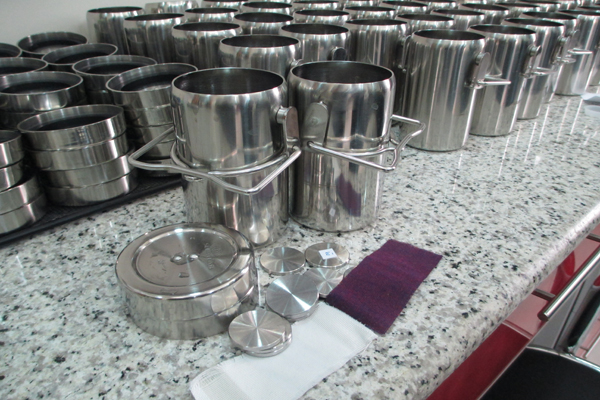
NewsInformation Center
Washing Color Fastness test method
2018/06/07

It refers to the situation of fade and discoloration of dye textiles when soaping. The main machines used in washing color fastness are Washing Color Fastness Testers. Generally, there are two indicators measured in washing color fastness test, including testing fade of original sample and staining of white cloth. Fade of original sample is the color change of dyed textiles before and after soaping. Staining of white cloth is the situation of staining of white cloth which it is soaping together with dyed fabrics.
In the testing, dyed sample is stitched together with one or two specified woven fabrics, placed in a soap solution, mechanically stirred at a specified time and temperature, then rinsed and dried. At this moment, dyed sample fades and contaminates the white adjacent fabric. Discoloration of dyed sample and staining of adjacent fabric are measured by gray cards. Water color fastness is divided into 5 grade and 9 files, among which the best is grade 5 while the worst is grade 1.
Washing Color Fastness Test
(1) Laboratory equipment and materials
Washing Color Fastness Tester (Figure 1), Gray Cards of Evaluating Discoloration, Gray Cards of Evaluating Staining, Beaker, Anhydrous Sodium Carbonate (C.P.), Standard Soap Sheet, Standard Multi-Fiber Patch Cloth (consist of wool, polyacrylonitrile fiber, polyester, polyamide fiber, cotton, vinegar fiber) or Single Fiber Patch Cloth, Sample to be tested.
Figure 1 Washing Color Fastness Tester
1-Drain Pump 2-Heating Protector 3-Passive Gear 4-Motor 5-Reducer 6-Motor Vice Gear 7-Drainage Interface
8-Active Gear 9-Rotating Frame 10-Test Cup 11-Studio Temperature Controller 12-Time Relay 13-Buzzer
14-Preheating Room Temperature Controller 15-Drainage Switch 16-Door Cover 17-Power Switch 18-Insulation
19-Temperature Sensor 20-Tubular Heater 21-Drainage Pipe 22-Drain Pipe Interface 23-Water Pipe 24-Wheel
(2) Testing Methods
a) Preparation of Sample
① Fabric sample. Taking a 40mm*100mm sample, then its positive is stitched together with a 40mm*100mm multi-fiber patch cloth, along a short edge, to form a combined sample; or placing the sample into two 40mm*100mm single fiber patch cloth, and the first single fiber patch cloth is made from same fiber as the sample, the second is made from corresponding fiber of the first piece woven fabric in Table 1. If the sample is mixed textile or intertwined fabric, the first piece is made from fiber of main content and the second piece is made from fiber of secondary content.
② Yarn or scattered fiber sample. Taking yarn or scattered fiber approximately equal to half the total quality of adjacent fabric is embedded between a 40mm*100mm multi-fiber adjacent fabric
and a 40mm*100mm fabric that is unable to dye (such as polypropylene fiber ), sewing them along four edges to form a combined sample. Or Taking yarn or scattered fiber approximately equal to half the total quality of adjacent fabric is embedded between two 40mm*100mm single fiber adjacent fabrics, sewing them along four edges to form a combined sample. If the sample is yarn, you can weave it as a woven fabric and test it according to textiles testing method.
b) Operating Procedure
① According to types of product and requirements, the parameters of washing color fastness should be set as Table 2. If fabric raw material is silk, viscose fiber, wool, nylon, you can adopt method 1; if raw material is cotton, polyester, nitrile, you can adopt method 3.
② Combined sample prepared in advance is placed in container, pouring soap liquid having been pre-heated to specific temperature in it.
③ Switch on Washing Color Fastness Tester.
④ Combined sample is taken out in a certain time and washed by grade 3 water for twice. Then it is rinsed cleanly in flowing cool water, squeezed excess water. Finally separated, the sample is linked with adjacent fabric in a short side stitching, hung and dried in air of no more than 60℃.
⑤ Discoloration of original sample and staining of adjacent fabric is evaluated by gray cards.

Previous: Analysis on the factors of fuzzing and pilling of fabric
N e x t : Fabric Dimensional Stability Shrinkage Testing



